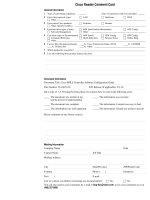mpls and bgp lab guide
Bạn đang xem bản rút gọn của tài liệu. Xem và tải ngay bản đầy đủ của tài liệu tại đây (619.36 KB, 22 trang )
Implementation of Frame Mode MPLS
Assigning MPLS Labels to Packets
Label Allocation in a Frame
Mode MPLS Environment
Label Allocation in a Frame Mode
MPLS Environment
• Label allocation and distribution in a frame mode MPLS network
follows these steps:
1. IP routing protocols build the IP routing table.
2. Each LSR assigns a label to every destination in the IP routing
table independently.
3. LSRs announce their assigned labels to all other LSRs.
4. Every LSR builds its LIB, LFIB, and FIB data structures based on
the received labels.
• Note: Label allocation, label imposing, label swapping, and label
popping usually happen in the service provider network, not the
customer (enterprise) network. Customer routers will never see a
label.
Building the IP Routing Table
• IP routing protocols are used to build IP routing tables on all
LSRs.
• FIBs are built based on IP routing tables, initially with no
labeling information.
Allocating Labels
• Every LSR allocates a label for every destination in the IP
routing table.
• Labels have local significance.
• Label allocations are asynchronous.
LIB and LFIB Setup
• LIB and LFIB structures have to be initialized on the LSR
allocating the label.
• Untagged action will remove the label from the frame and the
router will send a pure IP packet.
Label Distribution and
Advertisement
Label Distribution and Advertisement
• The allocated label is advertised to all neighbor LSRs,
regardless of whether the neighbors are upstream or
downstream LSRs for the destination.
Receiving Label Advertisement
• Every LSR stores the received label in its LIB.
• Edge LSRs that receive the label from their next hop also
store the label information in the FIB.
Interim Packet Propagation
• Forwarded IP packets are labeled only on the path segments
where the labels have already been assigned.
Further Label Allocation
• Every LSR will eventually assign a label for every
destination.
Receiving Label Advertisement
• Every LSR stores received information in its LIB.
• LSRs that receive their label from their next-hop LSR will
also populate the IP forwarding table.
Populating the LFIB Table
Populating the LFIB Table
• Router B has already assigned a label to network X and
created an entry in the LFIB.
• The outgoing label is inserted in the LFIB after the label is
received from the next-hop LSR.
Packet Propagation Across
an MPLS Network
Packet Propagation Across
an MPLS Network
Penultimate Hop Popping
Penultimate Hop Popping
• PHP optimizes MPLS performance (one less LFIB lookup).
• The pop or implicit null label uses a reserved value when
being advertised to a neighbor.
Before the Introduction of the PHP
• Double lookup is not an optimal way of forwarding labeled packets.
• A label can be removed one hop earlier.
After the Introduction of the PHP
• A label is removed on the router before the last hop within an
MPLS domain.
Summary
• Every LSR assigns a label for every destination in the IP
routing table.
• Although labels are locally significant, they have to be
advertised to directly reachable peers.
• Outgoing labels are inserted in the LFIB after the label is
received from the next-hop LSR.
• Packets are forwarded using labels from the LFIB table
rather than the IP routing table.
• PHP optimizes MPLS performance (one less LFIB lookup).









